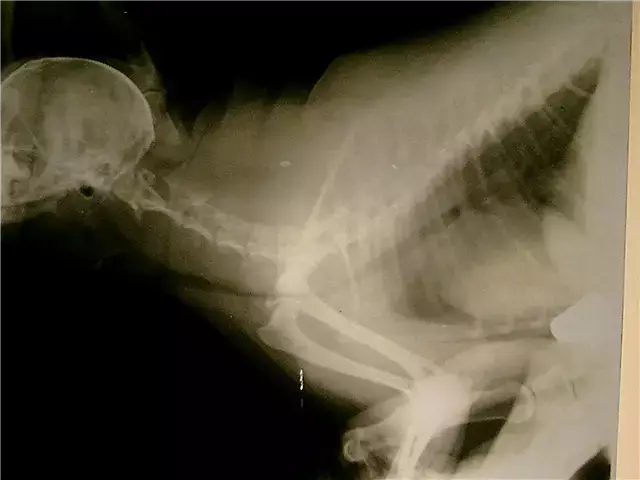- Author Rachel Wainwright [email protected].
- Public 2023-12-15 07:39.
- Last modified 2025-11-02 20:14.
Bravinton
Instructions for use:
- 1. Release form and composition
- 2. Indications for use
- 3. Contraindications
- 4. Method of application and dosage
- 5. Side effects
- 6. Special instructions
- 7. Drug interactions
- 8. Terms and conditions of storage

Bravinton is a drug that improves cerebral circulation, has antihypoxic, antiaggregatory and vasodilating effects.
Release form and composition
- concentrate for preparation of solution for infusion: clear, colorless or slightly greenish liquid [2 ml in dark glass ampoules, 5 ampoules in a blister strip, 1 or 2 packs in a cardboard box complete with an ampoule knife or scarifier; 5 or 10 ampoules in a cardboard box with an insert with cells for ampoules in one or two rows (when using ampoules with a break ring or notches, the ampoule knife or scarifier is not inserted)];
- tablets: white with a yellowish tinge of color (10 pcs. in blisters and 50 pcs. in plastic bottles, in a cardboard box 2 packs or 1 bottle).
Active ingredient: vinpocetine, in 1 ml of concentrate and 1 tablet - 5 mg.
Auxiliary components of the concentrate: sodium disulfite (sodium metabisulfite), benzyl alcohol, tartaric acid, sorbitol, ascorbic acid, water for injection.
Indications for use
- acute and chronic forms of cerebral circulation insufficiency: encephalopathy, transient ischemic attack, multi-infarction dementia, recovery stage of hemorrhagic stroke, acute and recovery stages of ischemic stroke;
- in ophthalmology: vascular diseases of the retina and / or choroid, secondary glaucoma, partial vascular occlusion, macular degenerative changes caused by angiospasm or atherosclerosis;
- in otolaryngology: Meniere's disease, senile hearing loss, dizziness of labyrinthine origin, hearing impairment of vascular and toxic (including medication) genesis.
Contraindications
- acute phase of hemorrhagic stroke;
- severe heart rhythm disturbances;
- severe ischemic heart disease;
- age up to 18 years;
- pregnancy and lactation;
- hypersensitivity to Bravinton's components.
Method of administration and dosage
The solution prepared from the concentrate is intended for slow drip intravenous infusion. The initial dose is 20 mg in 500-1000 ml of infusion solution, then the dose is gradually increased, on the 10th day it is possible to reach a maximum daily dose of 1 mg / kg.
The duration of therapy is 10-14 days. If it is necessary to continue treatment, the dose is gradually reduced and the patient is transferred to the oral form of the drug.
In tablets, Bravinton is prescribed in a dose of 5-10 mg 3 times a day. The duration of the drug use is determined individually. The treatment is long, at least 2 months.
Side effects
- from the nervous system: dizziness;
- from the digestive system: nausea;
- on the part of the cardiovascular system: flushing of the skin of the face, tachycardia, transient decrease in blood pressure, an increase in the excitation time of the ventricles, extrasystole;
- others: a feeling of heat, thrombophlebitis at the injection site.
special instructions
In case of termination of treatment, the dose of Bravinton should be gradually reduced.
The concentrate contains sorbitol, therefore, during the course of parenteral therapy, patients with diabetes mellitus need to control the level of glucose in the blood.
In hemorrhagic cerebral stroke, the drug can be administered intravenously only after the disappearance of acute symptoms (usually after 5-7 days).
During treatment, care should be taken when driving vehicles and performing potentially hazardous work.
Drug interactions
Vinpocetine is pharmaceutically incompatible with heparin.
In the case of the simultaneous use of heparin, the risk of developing hemorrhagic complications increases.
Terms and conditions of storage
Store in a dark place, out of reach of children, at temperatures up to 25 ° C.
Shelf life is 2 years.
Information about the drug is generalized, provided for informational purposes only and does not replace the official instructions. Self-medication is hazardous to health!






